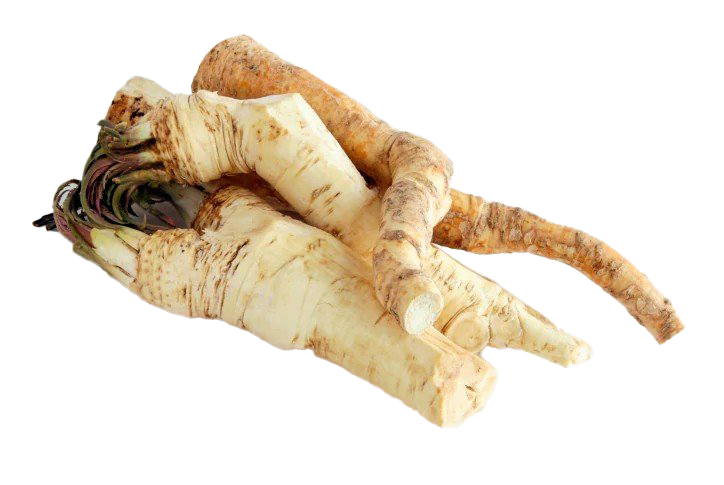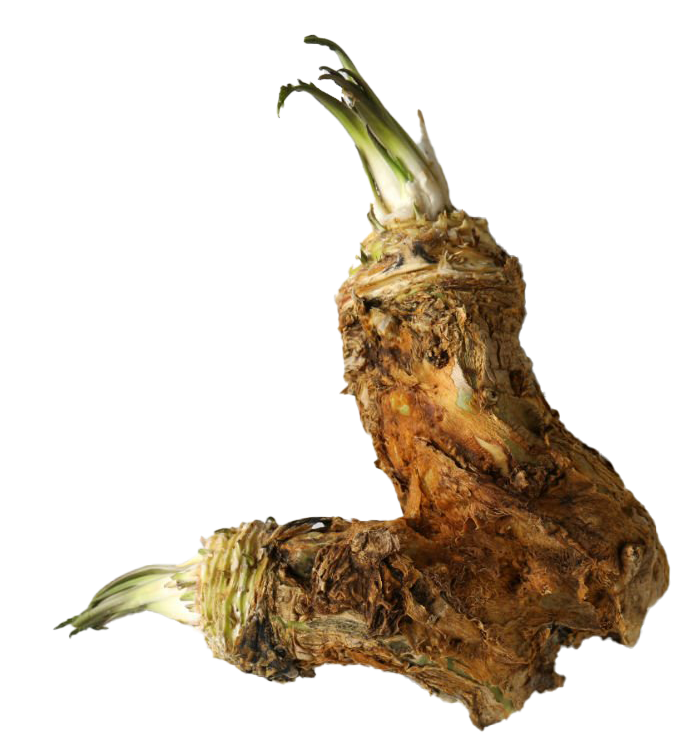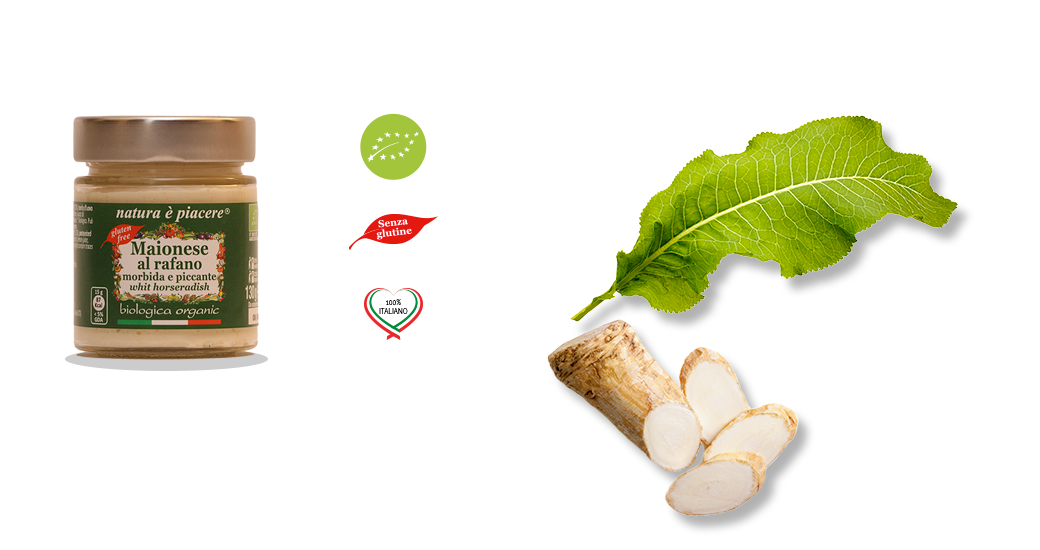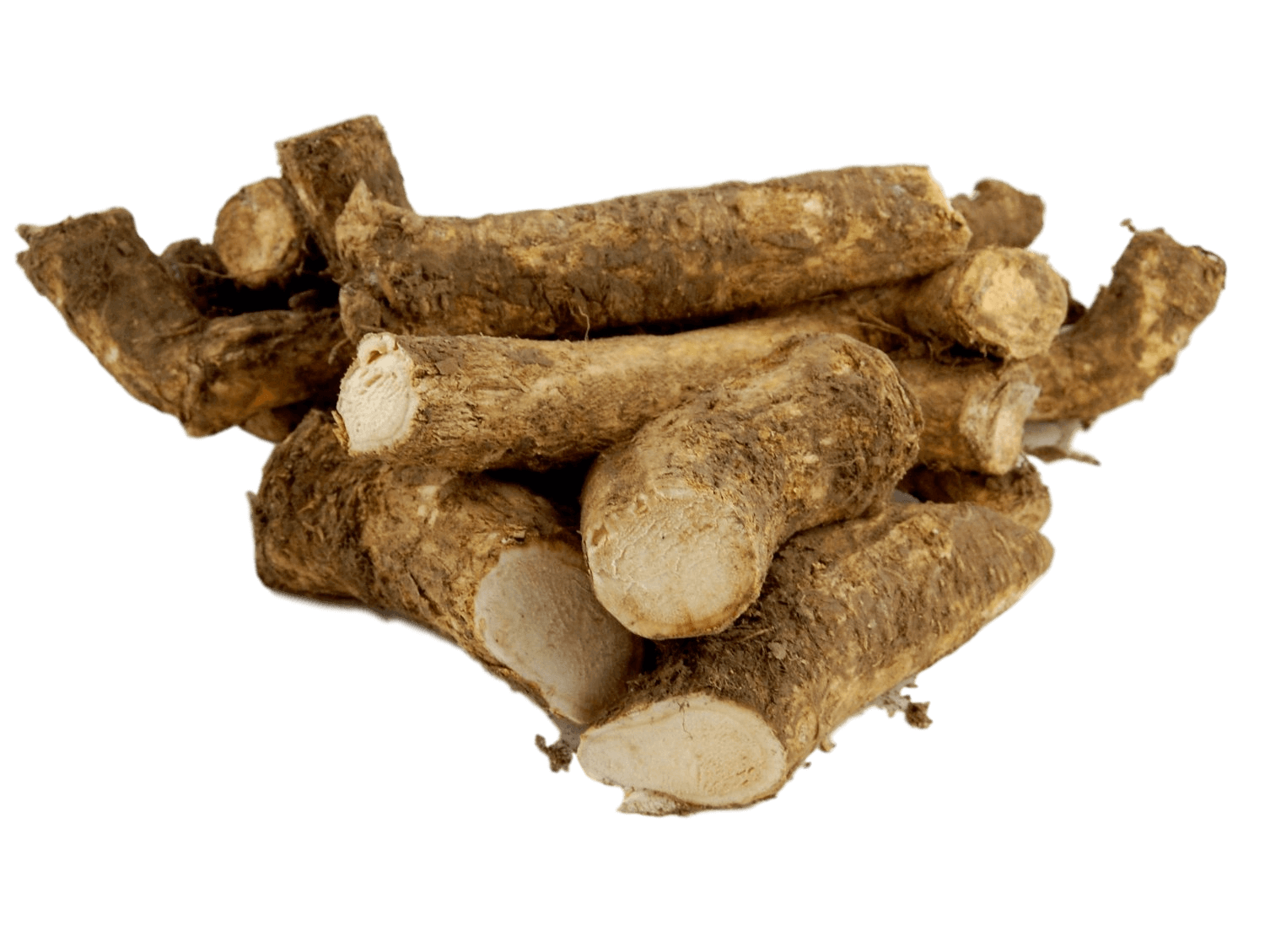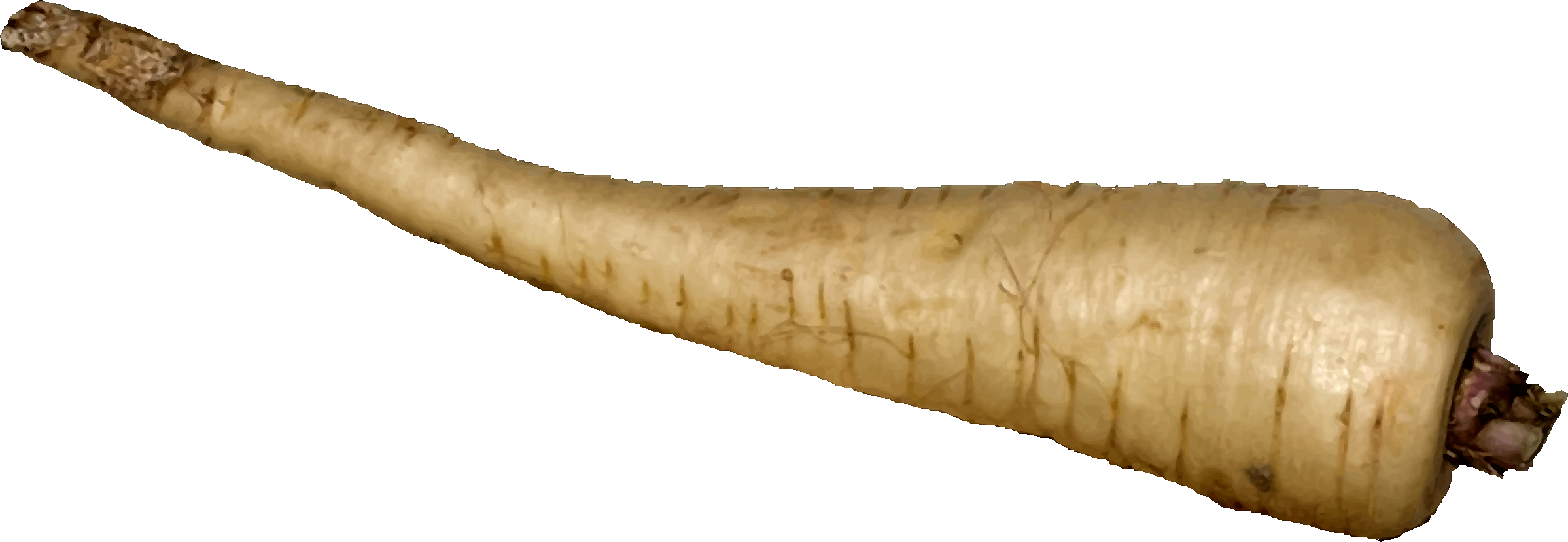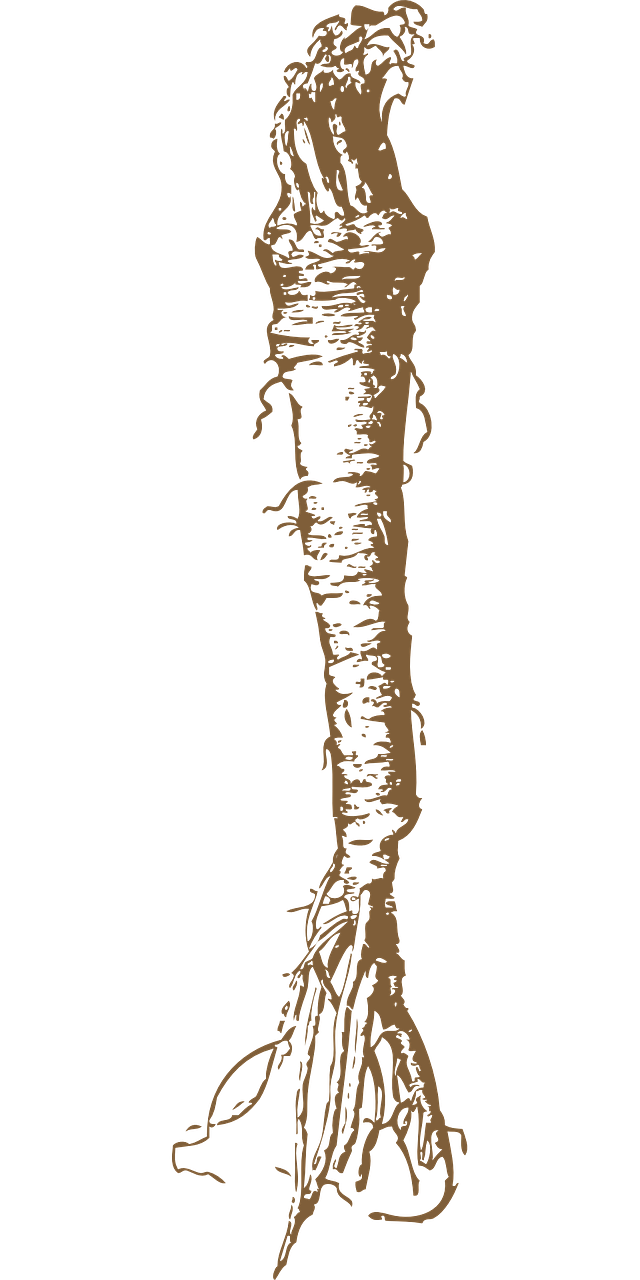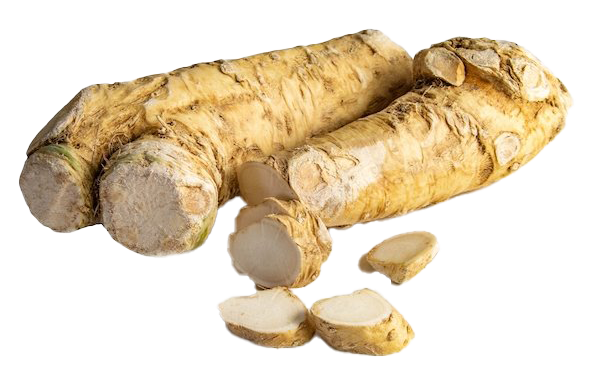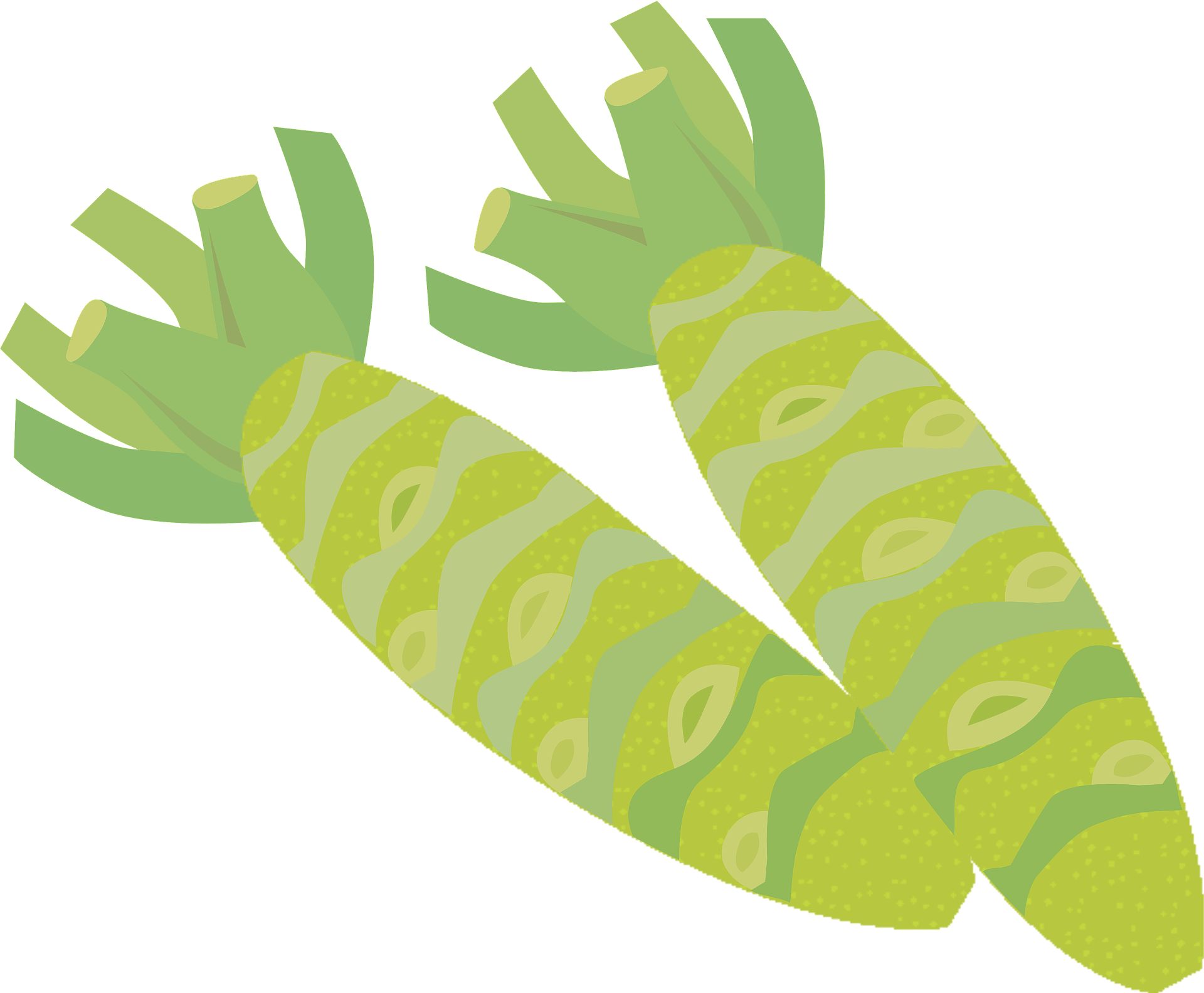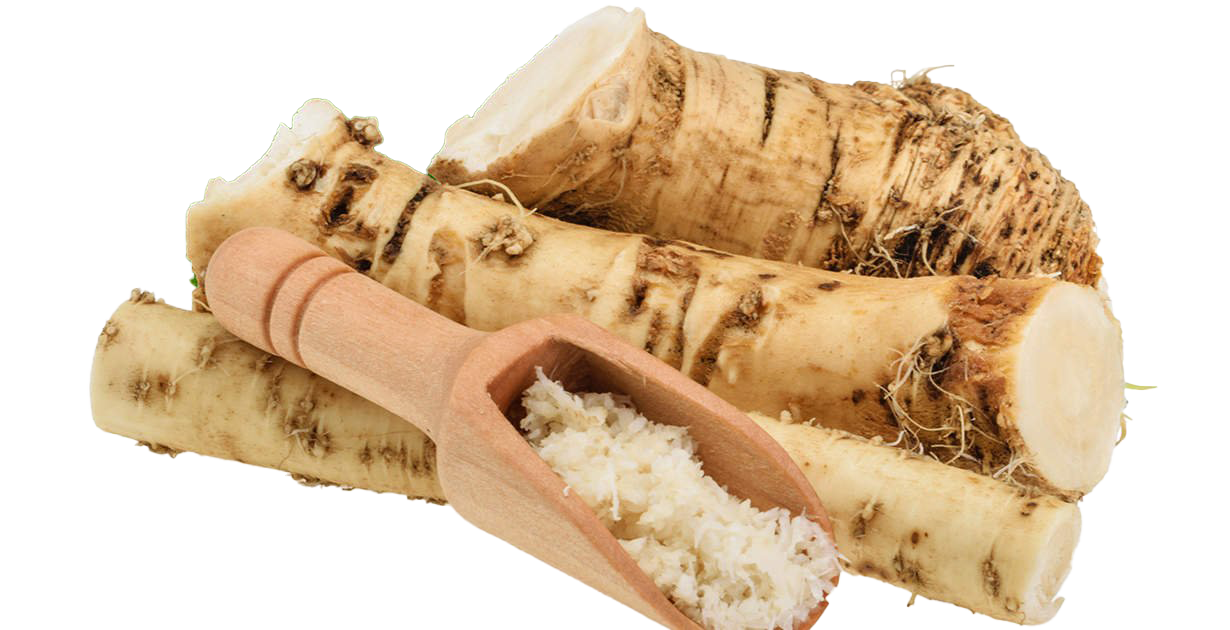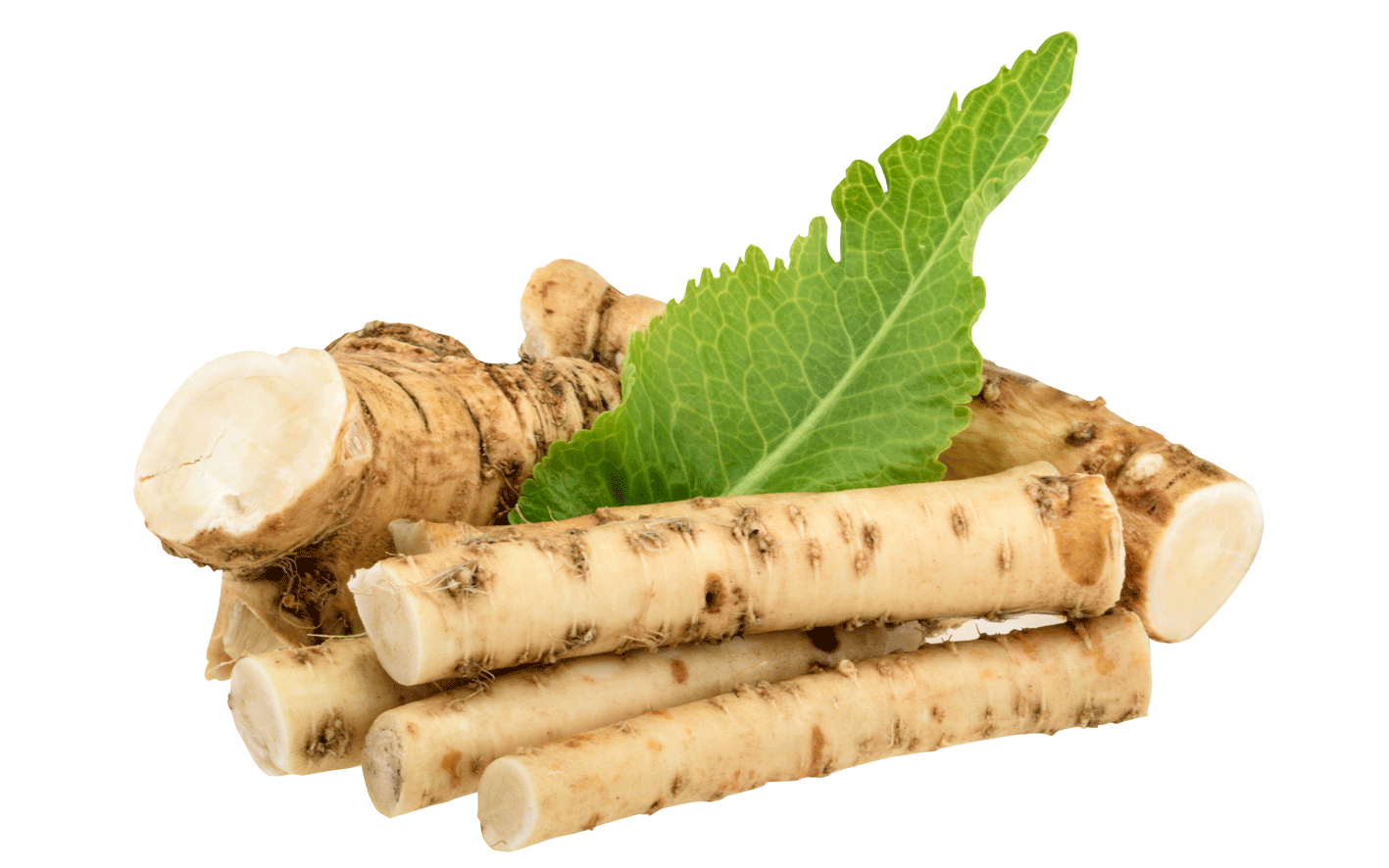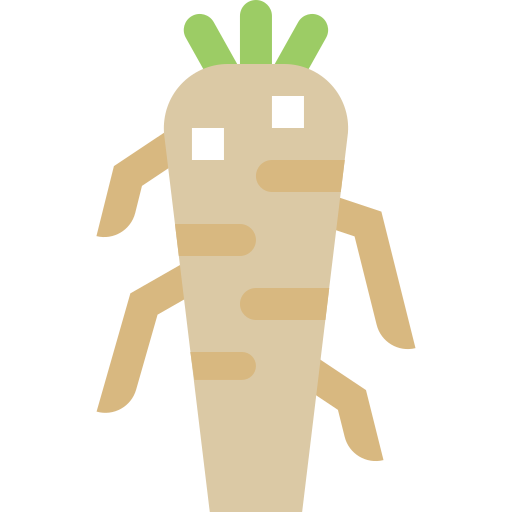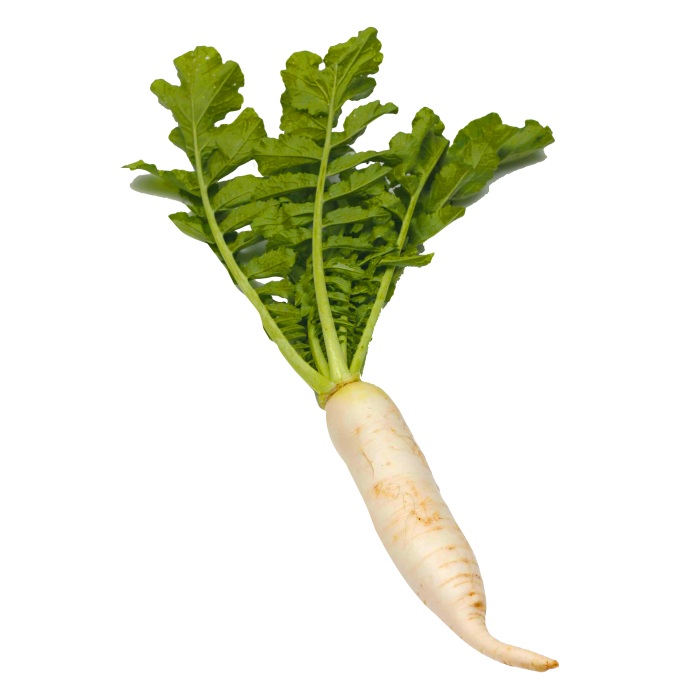Download top and best high-quality free Horseradish PNG Transparent Images backgrounds available in various sizes. To view the full PNG size resolution click on any of the below image thumbnail.
License Info: Creative Commons 4.0 BY-NC
Horseradish (Armoracia rusticana, syn. Cochlearia armoracia) is a perennial from the Brassicaceae family (which also includes mustard, wasabi, broccoli, cabbage and radish). It is a root vegetable used as a spice and prepared as a condiment.
The plant is probably native to southeastern Europe and western Asia. It is commonly used worldwide. It grows up to 1.5 meters (4.9 feet) in height and is grown primarily for its large, slender white root.
The intact horseradish root has little flavor. When cut or grated, enzymes inside plant cells digest sinigrin (a glucosinolate) to produce allyl isothiocyanate (mustard oil), which irritates the mucous membranes of the sinuses and eyes. Once exposed to air or heat, horseradish loses its pungency, darkens and develops a bitter flavor.
Horseradish is probably native to temperate eastern Europe, where its Slavic name Khren seemed to Augustine Pyramus of Candolle more primitive than any western synonym. Horseradish has been cultivated since Antiquity. According to Greek mythology, the Delphic Oracle told Apollo that horseradish was worth its weight in gold. Dioscorides listed horseradish also as Persicon sinapi (Diosc. 2.186) or Sinapi persicum (Diosc. 2.168), which Pliny’s natural history reported as Persicon napy; Cato discusses the plant in his treatises on agriculture, and a mural in Pompeii shows the plant. Horseradish is probably the plant mentioned by Pliny the Elder in his natural history under the name of Amoracia, and recommended by him for its medicinal qualities, and perhaps the wild radish, or agrios raphanos of the Greeks. The first Renaissance herbalists Pietro Andrea Mattioli and John Gerard showed it under Raphanus. Its modern Linnaean genus Armoracia was first applied to it by Heinrich Bernhard Ruppius, in his Flora Jenensis, 1745, but Linnaeus himself called it Coclearia armoracia.
The roots and leaves were used as a traditional medicine in the Middle Ages. The root was used as a condiment on meats in Germany, Scandinavia and Great Britain. It was introduced to North America during European colonization. George Washington and Thomas Jefferson both mention horseradish in garden accounts.
Horseradish is perennial in hardiness zones 2–9 and can be grown as an annual plant in other areas, but not as well as in areas with both a long growing season and winter temperatures cold enough to ensure the dormancy of plants. After the first autumn frosts that kill the leaves, the root is dug and divided. The main root is harvested and one or more major offshoots of the main root are replanted to produce next year’s crop.
Download Horseradish PNG images transparent gallery.
- Horseradish
Resolution: 512 × 512
Size: 16 KB
Image Format: .png
Download
- Horseradish PNG Clipart
Resolution: 724 × 485
Size: 275 KB
Image Format: .png
Download
- Horseradish PNG Download Image
Resolution: 695 × 747
Size: 356 KB
Image Format: .png
Download
- Horseradish PNG File
Resolution: 1040 × 550
Size: 286 KB
Image Format: .png
Download
- Horseradish PNG Free Download
Resolution: 1500 × 1129
Size: 353 KB
Image Format: .png
Download
- Horseradish PNG Free Image
Resolution: 2397 × 828
Size: 587 KB
Image Format: .png
Download
- Horseradish PNG HD Image
Resolution: 640 × 1280
Size: 261 KB
Image Format: .png
Download
- Horseradish PNG High Quality Image
Resolution: 632 × 1920
Size: 22 KB
Image Format: .png
Download
- Horseradish PNG Image File
Resolution: 2058 × 2058
Size: 281 KB
Image Format: .png
Download
- Horseradish PNG Image
Resolution: 600 × 372
Size: 254 KB
Image Format: .png
Download
- Horseradish PNG Images
Resolution: 1920 × 1584
Size: 114 KB
Image Format: .png
Download
- Horseradish PNG Photo
Resolution: 512 × 139
Size: 42 KB
Image Format: .png
Download
- Horseradish PNG Pic
Resolution: 1230 × 630
Size: 764 KB
Image Format: .png
Download
- Horseradish PNG Picture
Resolution: 1417 × 886
Size: 281 KB
Image Format: .png
Download
- Horseradish PNG
Resolution: 512 × 512
Size: 17 KB
Image Format: .png
Download
- Horseradish Transparent
Resolution: 700 × 700
Size: 218 KB
Image Format: .png
Download

